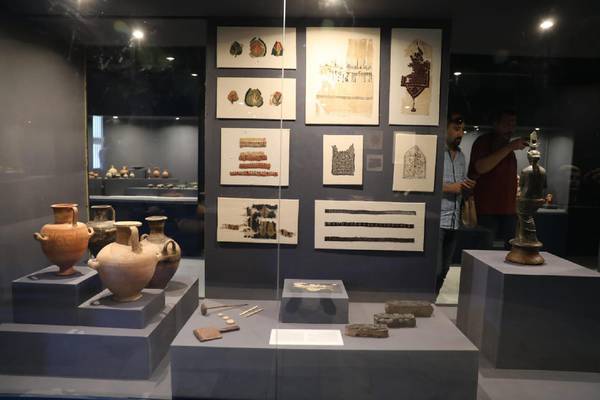One of Egypt's oldest museums reopens after 19 yrs
Closed for restoration, collections from different eras
CAIRO - The museum of the Egyptian city of Tanta has reopened after being closed for 19 years for restoration.
Inaugurated in 1913 in the capital of the Gharbiyya governorate, 90 kilometres from Cairo and in the heart of the Nile Delta, Tanta was at that time the first museum in the province. Over the years it has been closed and reopened several times.
In 2000 it was closed for restoration works rendered necessary by the precarious condition of the structure. The building has been enlarged over the years it was closed, too, in order to create space for its enormous collection. After these 19 years and 13 million Egyptians liras of investment (over 700,000 euros), the restored museum was finally inaugurated in the presence of Minister of Antiquities Khaled el-Enany, Gharbiyya governor Hisham Al-Saeed and Secretary for the Supreme Council of Antiquities Moustafa Waziri.
''The investment in the Tanta museum,'' the minister said, ''is part of a government plan to renovate, develop and reopen all museums at the national level to make them more of a tourist attraction and to enrich the archaeological baggage of Egyptians.'' To this end, he said, entrance to the museum will be free for 15 days to celebrate its new opening. The five-storey museum has 2,500 exhibits from several different epochs: the Roman, Greek and Pharaonic, for example, with a statue of the god of medicine Imhotep, an icon of the Virgin Mary and a statue of the god Osiris. Some 1,208 coins from almost all historical epochs of Egypt are also on exhibit. On the first floor, visitors can make use of the services offered by the museum, while the second and third levels were designed to host archaeological finds and the collections. On the fourth floor is the conference hall and administrative offices are on the fifth. The third floor of the museum focuses on the beliefs of ancient Egyptians concerning the afterlife and their attention to funerary chambers as the first phase of the resurrection of corpses. The collection on this floor also includes replicas of doors, sculptures and reliefs that show the relationship between the dead and divinities, a collection of vases of various sizes, shapes and materials that were used to preserve food and perfumes.
-- Sent from my Samsung Galaxy Tab S4 running Ubuntu Linux.

No comments:
Post a Comment